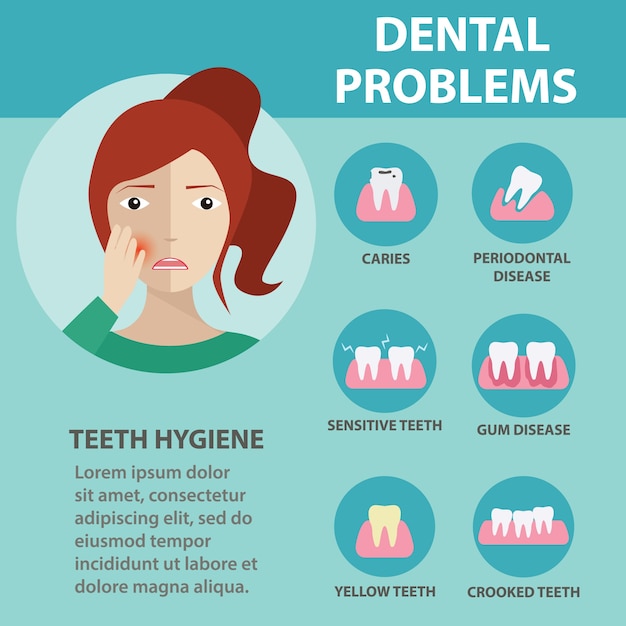Keep Prepared For Unexpected Oral Emergency Situations By Recognizing The Indications Of Injury And Knowing When It Is Needed To Look For Immediate Healthcare
Keep Prepared For Unexpected Oral Emergency Situations By Recognizing The Indications Of Injury And Knowing When It Is Needed To Look For Immediate Healthcare
Blog Article
Material By-Montoya Schaefer
If you feel a sudden shock of pain or see a tooth injury, it can be upsetting. But how do you establish if it's a dental emergency situation that calls for prompt focus? Understanding the critical indications and recognizing when to seek aid can make all the difference in preserving your oral wellness. Knowing when to act swiftly could suggest the distinction between a quick fix and much more extensive treatment.
Common Types of Dental Injury
What're the typical kinds of dental trauma that you should be aware of?
Crashes can take place, leading to numerous kinds of dental injuries. One typical type of dental injury is a cracked tooth. This can occur from attacking down on something hard or experiencing a strike to the face.
One more type is a broken tooth, where a part of the tooth can chip off. Furthermore, you might experience a knocked-out tooth, which can take place during sporting activities or drops. https://tysonkeztn.blog4youth.com/30778309/launch-your-trip-towards-a-confident-smile-with-a-full-teeth-cleansing-regimen-incorporating-brushing-flossing-and-vital-oral-care-procedures-disclose-the-techniques-to-a-brilliant-smile to deal with the tooth thoroughly and seek instant oral focus.
https://www.etonline.com/the-best-teeth-whitening-deals-available-during-amazon-prime-day-take-42-off-crest-3d-whitestrips can likewise involve a tooth that has been pushed out of setting or loosened as a result of an injury. This sort of injury calls for prompt therapy to conserve the tooth.
Last but not least, soft tissue injuries in the mouth, such as cuts, can also take place from mishaps. Understanding about these typical kinds of dental injury can assist you act quickly and suitably in case of an emergency.
Indicators of Oral Emergencies
Recognizing the signs of oral emergency situations is vital for timely activity and appropriate treatment. If you experience extreme tooth discomfort that's constant and throbbing, it might show a hidden problem that needs instant interest.
Swelling in the periodontals, face, or jaw can also be a sign of a dental emergency situation, specifically if it's accompanied by pain or high temperature. Any kind of type of trauma to the mouth leading to a split, broken, or knocked-out tooth needs to be dealt with as an emergency situation to avoid additional damages and prospective infection.
Bleeding from the mouth that does not quit after using stress for a few minutes is another warning that you ought to look for emergency dental care. Additionally, if you observe any type of signs of infection such as pus, a nasty taste in your mouth, or a fever, it's necessary to see a dental practitioner asap.
Ignoring these signs can lead to a lot more serious difficulties, so it's important to act swiftly when confronted with a prospective dental emergency.
Value of Immediate Therapy
Motivate activity and prompt therapy are critical in dealing with oral emergency situations to stop more difficulties and make sure optimal end results for your oral wellness.
When faced with an oral emergency, such as a knocked-out tooth or extreme toothache, seeking prompt treatment can make a significant distinction in conserving your tooth and minimizing discomfort. Delaying therapy can lead to infection, boosted discomfort, and even long-term damages to your teeth and gums.
By seeking emergency oral care promptly, you enhance the opportunities of successful treatment and reconstruction. Dental professionals have the needed skills and tools to resolve emergency situations properly, reducing the risk of long-lasting repercussions.
Additionally, immediate treatment can assist take care of discomfort and pain, allowing you to resume your daily activities without diversion.
Conclusion
In conclusion, understanding dental trauma and understanding when to seek emergency treatment is critical for maintaining oral wellness.
By identifying usual kinds of dental injuries and the indications of dental emergency situations, you can make certain prompt care to prevent more damage and problems.
Bear in mind, seeking instant treatment can save teeth, minimize discomfort, and boost the opportunities of effective recovery.
Do not think twice to look for assistance from an oral specialist if you experience any type of indicators of oral trauma.
